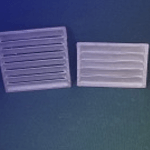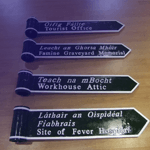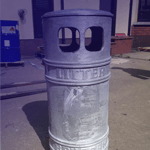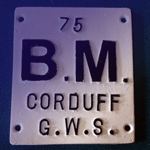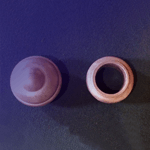Adamstown Engineering
 About Us
About Us
Adamstown Engineering Ltd is a family run Business
that has been in the foundry business for over 45 years In Ireland and United Kingdom.
We are highly experienced in producing castings. We have flexible manufacturing processes in which we can produce small or large runs.
Our family run business is large enough to service any requirement.
But we are small enough to care!
Metal Casting Process
Adamstown Engineering use 2 methods for manufacturing aluminium castings, Sand casting and Gravity Die casting.
Sand Casting is the more traditional method for casting aluminium
We use 2 types, Greensand and Air set sand casting.
Greensand Casting is the oldest and least expensive to setup.
Green sand is clay rich natural sand. Chemical additives and water are added to the sand to act as binders and adhesion promoters which result in a compound that is suitable for the sand moulding process.
The reason for a lower setup cost to begin producing sand castings is due to the pattern. Patterns are made primarily from timber (plastic being a modern option) which is less expensive than producing a steel die for gravity die casting.
The green sand mixture is compressed around the pattern taking on the shape of the casting. The pattern is removed and the two halves of the mould are closed to produce a cavity. The aluminium is poured into the cavity and left to solidify. After solidification has taken place the sand is removed to release the casting. The sand is then broken up mechanically and reused over and over again.
The green sand casting process is suitable for small to medium size batches. The initial tooling costs are generally low and involve the production of usually a wooden pattern.
Air set Casting process is used for large Castings. Air set chemicals produce a sand mould of considerable strength which can be free standing without the need for molding boxes and therefore unlimited in size. The process involves mixing sand, resin and a chemical hardener together. The sand mixture is then compressed around the pattern and left to set. Once both halves of the mould are hard the pattern is removed and the mould put together and aluminum poured in. Once solidified the sand is broken away and mechanically crushed for reuse.
Die casting is a manufacturing process that can produce geometrically complex metal parts through the use of reusable moulds, called Dies. A Die is normally made from high grade steel and are more expensive to manufacture than a pattern, but produce a better quality casting quicker than a pattern in greensand. The aluminum is melted in the furnace and transported to the die via ladle. The aluminium rapidly cools and solidifies into the final part, called the casting.
The castings that are created in this process can vary greatly in size and weight, ranging from a couple grams to 50 kilograms. One common application of die cast parts are housings – thin-walled enclosures, often requiring many ribs and bosses on the interior. Metal housings for a variety of appliances and equipment are often die cast. Several automobile components are also manufactured using die casting, including pistons, cylinder heads, and engine blocks. Other common die cast parts include propellers, gears, bushings, pumps, and valves.
Recent Projects
 24 Sep 2016New Aluminum Signs Our New Recent Projects – Aluminum Signs ...
24 Sep 2016New Aluminum Signs Our New Recent Projects – Aluminum Signs ...  20 Jan 2016What is the Difference between Brick Paving and Imprinted Concrete?Deciding to own a house is a big decision to make mostly for some it’s almost once in a lifetime. Ev...
20 Jan 2016What is the Difference between Brick Paving and Imprinted Concrete?Deciding to own a house is a big decision to make mostly for some it’s almost once in a lifetime. Ev...  20 Aug 2015Revamping old cobble paving with sealerA customer phoned into our office unhappy with her old cobble pathway. She wanted to freshen it up a...
20 Aug 2015Revamping old cobble paving with sealerA customer phoned into our office unhappy with her old cobble pathway. She wanted to freshen it up a...
Search
Contact Us
- ADAMSTOWN, COUNTY WEXFORD, IRELAND
- +353-53-9240886
- +353-53-9240850

